What Is Aquafaba and Why I Won’t Use It
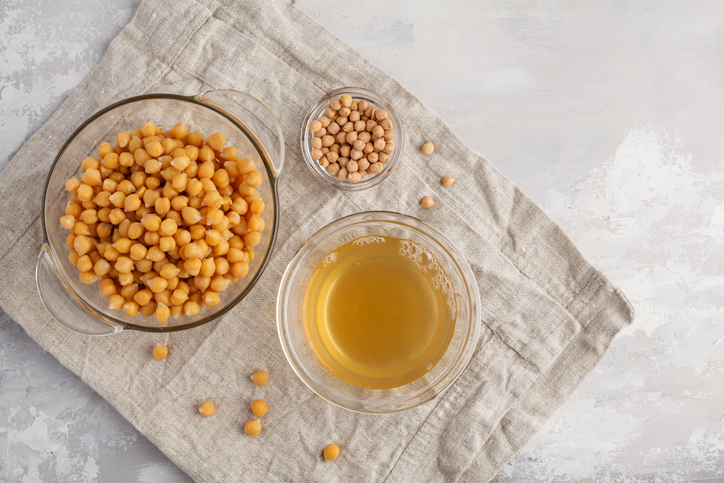
Aquafaba has become the darling of the vegan world in the last couple of years because it can replicate egg whites in recipes. For those who don’t (or can’t) eat eggs, aquafaba opens up a much wider array of possibilities for recipe creation and produces those light, fluffy baked goods they miss eating. As for me? I don’t like aquafaba and you certainly won’t see me using it in my kitchen!
What is Aquafaba?
Aquafaba is the water or brine you find in canned beans. Typically, you’d rinse the beans in a colander or strainer to wash away the liquid, but with aquafaba you save the brine and whip it up with a hand mixer or stand mixer until it’s light and fluffy. Aquafaba is used to make a variety of recipes, including:
- meringues
- marshmallow fluff
- mousse
- frosting/buttercream
- mayo
- vegan cheese
- marzipan
- macarons
- ice cream
- muffins, cupcakes and brownies
While I admire the technological creativity of aquafaba (that’s a kitchen experiment I never would have thought of!), it’s not something I have made and never will.
Why I Won’t Use Aquafaba
BPA
Many canned goods are lined with bisphenol A (BPA), a chemical that interferes with our hormones. (You’ll also find it in plastics and baby items.) BPA is linked to infertility, hormone-related cancers and hyperactivity in children. In canned goods, BPA leaches from the lining into the food and also the liquid that surrounds that food. Since aquafaba is a relatively thin liquid, it becomes very easy for any chemicals to disperse throughout it.
But what about BPA-free canned beans? Still, nope. More reasons why below!
ANTI-NUTRIENTS + compounds that interfere with digestion
Beans contain several anti-nutrients and other compounds that can negatively affect us. These include:
- Phytic acid: this binds to vitamins and minerals, making them less available for us to use.
- Oligosaccharides: these are sugars that remain undigested until they get to your colon, where the bacterial feast begins, often making us gassy.
- Saponins: they have a bitter, soapy quality that helps aquafaba whip up and get foamy. While saponins have some positive benefits, they can be very difficult to digest, leading to digestive upset (especially for those with existing digestive issues) and may even lead to leaky gut.
I don’t want to deter anyone from eating beans as they are loaded with essential nutrients like protein, fibre and iron. The process of cooking beans and legumes helps to reduce some of these compounds – and where do they go? They are released into the bean water. That’s why I recommend soaking and cooking beans from scratch, or rinsing the liquid from canned beans really, really well. Bean water is meant to be tossed, not consumed.
Gassiness
As I discuss in detail in the post How to Eat More Beans and Fart Less, many of us have some undesirable digestive effects after eating beans. There are many ways that we can reduce our gassy response to beans for sure, but one of the worst culprits are those oligosaccharides, which seep into the cooking water. When we use aquafaba, we are using the part that is probably going to make us the most tooty.
Sodium
Canned and processed foods contain large amounts of salt as a preservative (and often companies aren’t using the beneficial types of salt that contain minerals, either). Rinsing off the beans allows you to send some of this salt down the drain. One study also found that canned brine that contains sodium and disodium EDTA affects the volume and the stability of aquafaba foam. If you’re going to use aquafaba, opt for the salt-free beans as this will allow for a lighter, fluffier aquafaba.
No nutritional value
Selecting foods isn’t just about them being free of certain chemicals, preservatives or anti-nutrients. They also need to have nutritional value for me. There isn’t anything in aquafaba that is a true benefit for us to consume.
AQUAFABA isN’T Appealing
Knowing where it comes from – the slimy brine – doesn’t entice me in the slightest. Even the creator of aquafaba, a French opera tenor, agrees with me. When he was wondering how he could make a meringue without eggs, he actually asked himself: “What would disgust me as much as a raw egg white?”
When you combine the reality of what it is, with the reasons I’ve mentioned above, aquafaba just isn’t an ingredient I want to use in my cooking or baking. Whenever I create a recipe, I design it to be as health-building and delicious as possible. There are far too many elements of aquafaba that are detrimental to our health for it to be something I would use, plus there are so many great egg substitutions. Personally I’d rather have a flatter cake or muffins than incorporate aquafaba into my regular baking.
What To Use Instead of Aquafaba?
There is a wide range of egg replacements out there (you can read more about them with substitution tips in this guide to using egg replacers). Some of my favourites are:
- Flax and chia eggs: 1 Tbsp ground flax or chia mixed with 4 Tbsp water. This is my go-to for egg-free baking.
- Applesauce: A great binder in baked goods and also allows you to replace some of the oil, if desired (though I highly recommend making friends with fats).
Aquafaba-Free Recipe Inspiration
A few great recipes that give that light and fluffy texture without using aquafaba.
Paleo Chocolate Mousse Dip
By 40 Aprons
A rich and luxurious mousse that relies on chocolate and coconut milk.
The Best Banana Pancakes
By me!
This is a staple recipe in our household – and we often use a flax egg instead of a chicken egg and they work just as beautifully.
Vegan Maple Cashew Cream Cheese Frosting
Maple + cinnamon make a great combo in this cashew-based frosting. For more healthy icing inspiration, check out the Academy of Culinary Nutrition’s Best Real Food Healthy Frosting Recipes roundup.
Cashew Mayo/Cream
By Sondi Bruner
There are 15 different ways to flavour cashew cream in this post – I recommend trying them all! You can always split your batch and add different flavourings to each.
Homemade Marshmallows
This isn’t a vegan recipe – it has gelatin – but if you are egg-free and not vegan this is a good one to try. It doesn’t use corn syrup and you can have marshmallow fluff if you use it right away, rather than letting it set.
Have you used aquafaba? What do you think of it?
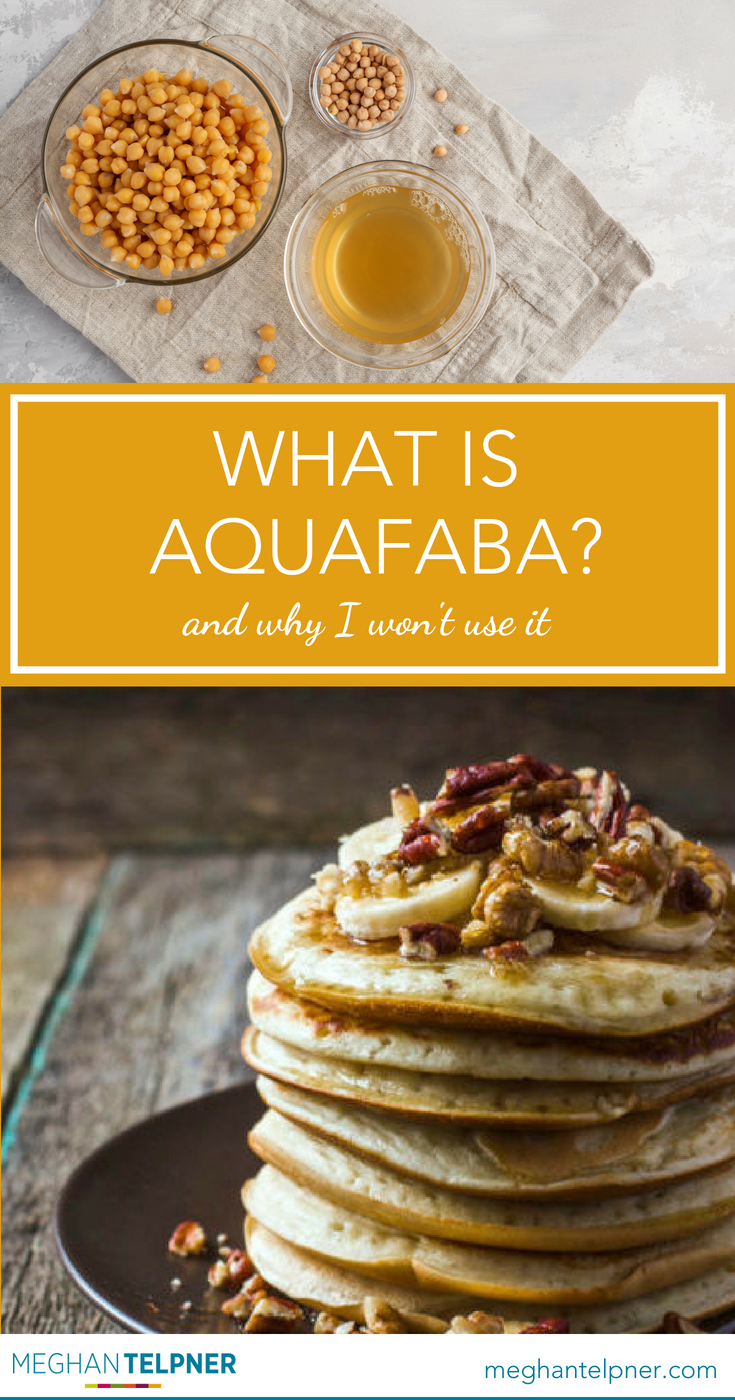
Photo credit: iStock/vaaseenaa
Free Resource Library
Enjoy more than 40 downloadable guides, recipes, and resources.















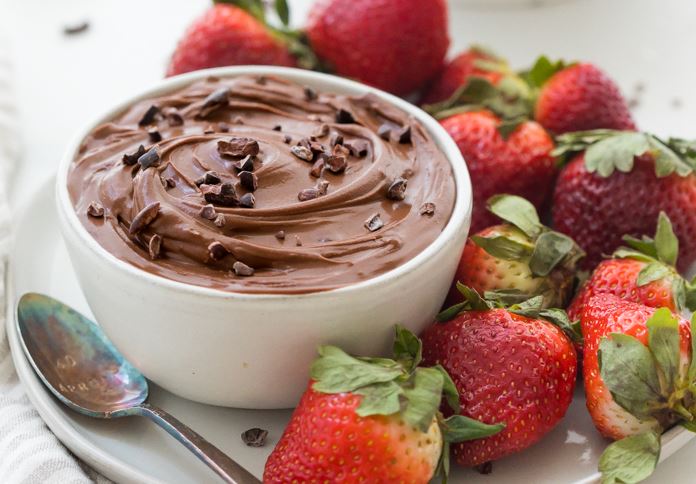
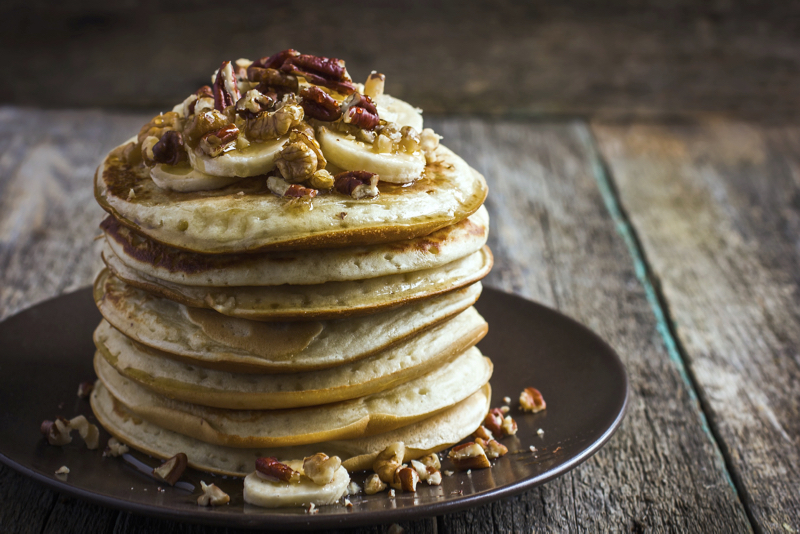
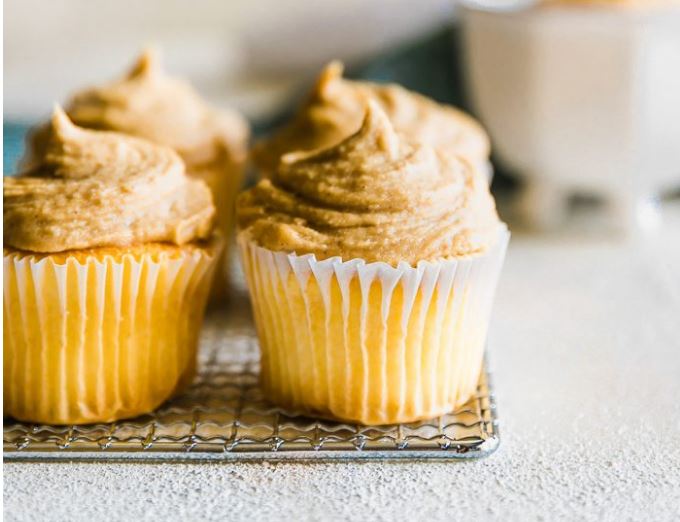
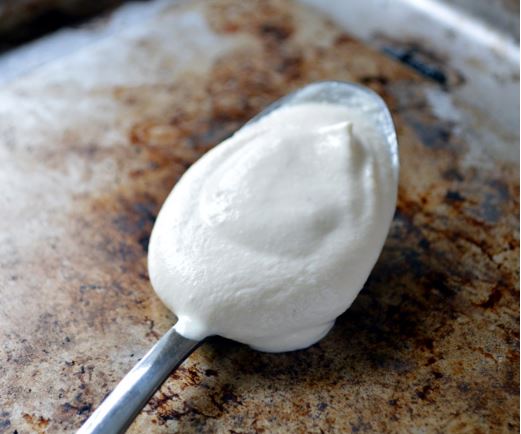
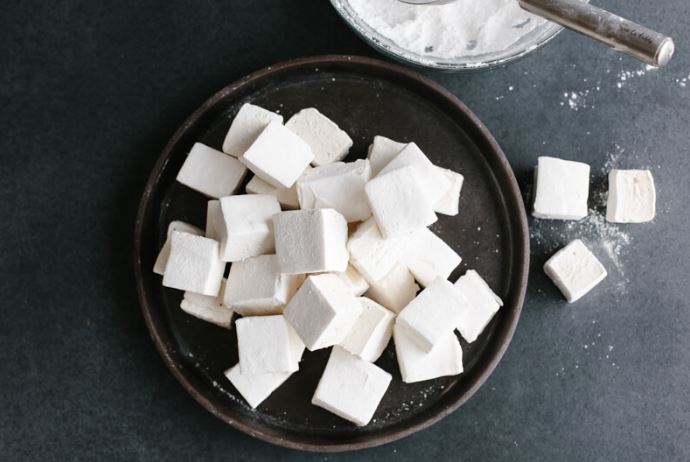
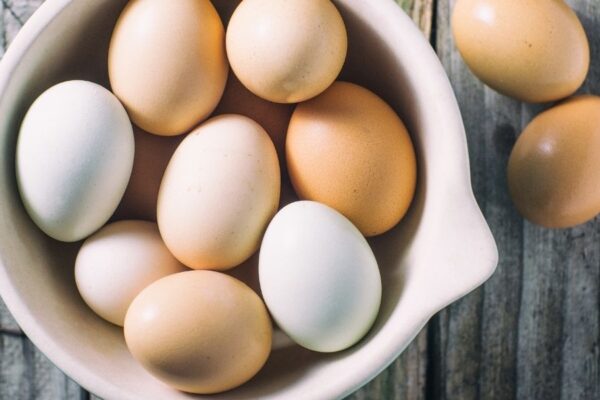
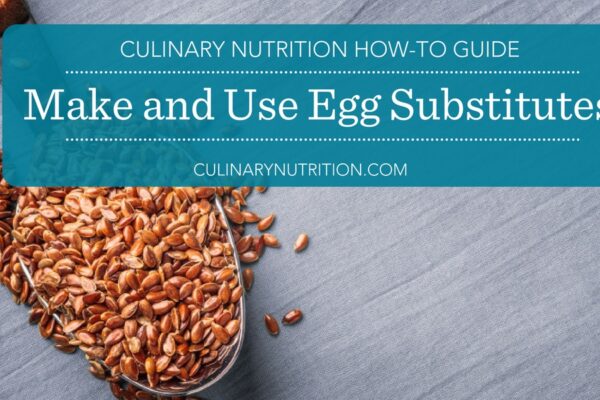
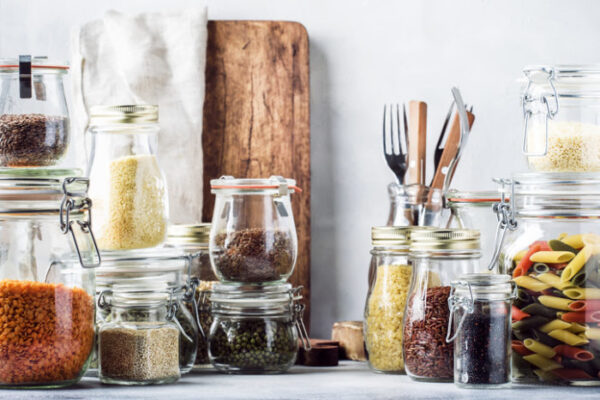


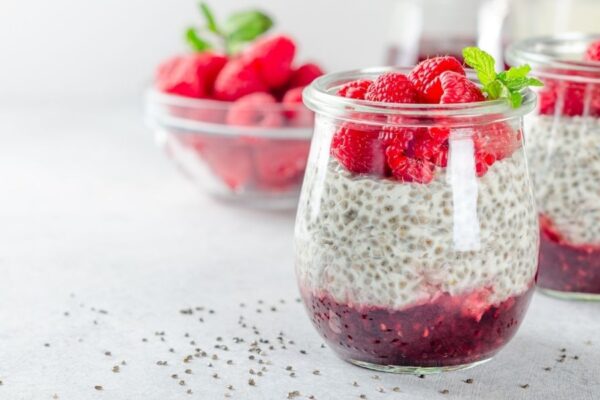

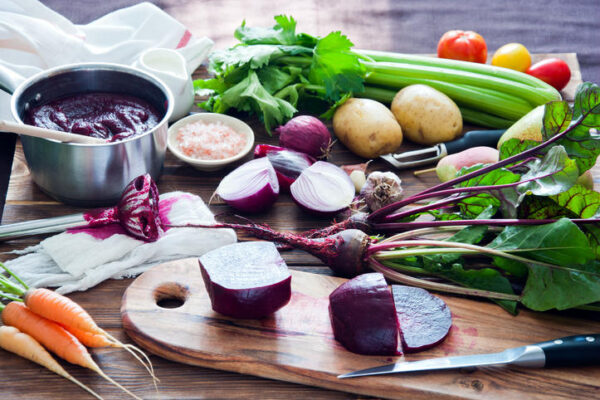
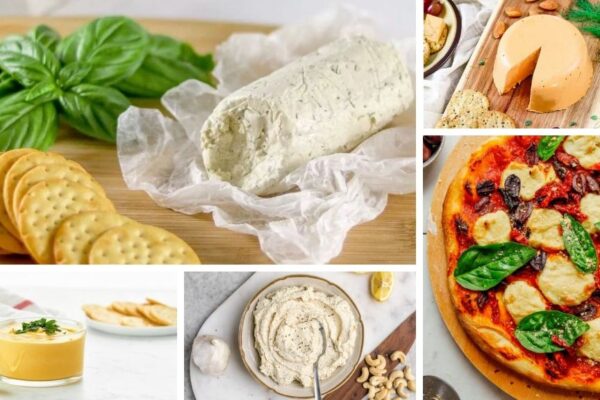
I’ve tried using aquafaba from beans cooked from scratch, and while I like the results, my body does not. It gives me terrible heartburn. So no aquafaba for me!
Interesting article! And thank you for featuring my recipe.
Yay, finally someone talking about how gross Aquafaba is!! Just the thought of it makes me want to gag. Thanks for talking about this!
I noticed that the first recipe, Paleo Chocolate Mousse Dip for Strawberries [from 40 aprons], advises to use a microwave to melt the chocolate chips. For those who never use the microwave, put the chips in a bowl that’s over a pot of boiling water and keep stirring until melted – works just fine.
Thank you SO much for this post. I really don’t like the idea of aquafaba but thought it was just me being weird! Glad it’s not just me x
Heather Crosby recommends using chickpea brine as an option to add golden colour and create a bouncy crumb without any bean flavour. She does reccomend chia seed and psyllium husk as an egg replacement as well. I love Heather’s course and recipes. I’ve tried the brine and wouldn’t have thought to associate discomfort with using it. Is chickpea any different than the others or do you feel the same way about this? What you’ve said makes sense. I have only used Eden’s brine or my own.
Amen! Amen! Amen!!!
those were my thoughts exactly, meghan! have never used it & will not use it.
thx!
Excellent post! It’s really cool what you can make with aquafaba, but not for me! We call it fart juice
Hi there,
As much as I love your aquafaba free recipes, I also disagree with you about some of the “cons” you’ve listed for aquafaba. First of all, if BPA is a concern, one can always cook their own beans and use the water. Secondly, i believe that most people do soak their beans overnight to get rid of the antinutrients before cooking, and the bean water is actually a nutritious substance and would be waste to throw out (has anyone not had bean soup?)…my last argument is for the taste. While it is disgusting to eat alone, the unpleasant taste is easily covered up if you used flavorings such as natural vanilla, cinnamon, nutmeg etc. I used vanilla and cinnamon, and added maple syrup as a sweetener to make an aquafaba mousse, and could not taste the bean at all in the final product, it was delicious!
Thanks for the article, Meghan. I had never heard of aquafaba before, but I am happy to know your reasons for choosing not to use it. As for the gas beans produce, years ago I read in a magazine that if you add a little dried ginger powder when you cook the beans you will eliminate the gas. I have tried it and it does work. I use about 1/4 tsp. It doesn’t change the taste of the beans, either.
Hi Meghan, great article! I’m seeking some clarification: this Aquafaba stuff is just that mysterious liquid in factory canned beans, right? If I make homemade beans from dried beans, is it ok to consume the bean broth (aka pot liquor) that results from cooking? For example, for making refried beans. This homemade bean broth obviously won’t work in desserts like what others are using Aquafaba for. Just curious!
I completely agree with what Jenny said! I don’t used canned anything anymore. I love aquafaba and I make mine from cooking dry beans that have been soaked overnight and thoroughly rinsed before cooking.
so it’s ok to use the aquafaba after i have cooked the chickpeas on my own (not from a can) ? i just cooked alot of chickpeas and i want to know what i should do with the water thank you
I totally agree!! I was always taught to rinse the beans really well because the cooking water is what makes you bloated. When I heard about people using the cooking water I was like
I don’t disagree with you, but there simply aren’t many good substitutes for someone with a nut allergy. I rarely use aquafaba, but I do indulge over the holidays to make a couple desserts for our family that my egg and nut allergic son can eat. I hope some other options become available.
Hello,
I’m learning about some of the details of maximizing the nutrition and minimizing the “anti-nutrition” properties and your comments about chick pea water are a good point, and the same point should be made for flaxseed and chia seeds too, but the pre-processing in the milled steps alone (that is, flax and chia have been milled but not been soaked and sprouted), might be less of a reduction of the phytic acid content (hence anti-nutrient content might be higher than in chickpea water alone) and so your concerns would be present for them also. I use them too by the way, especially in sourdough bread combined with sunflower seeds to add anti-oxidant vitamin E.
One additional point to add to look at the “substitute” properties is that the binding properties of chickpea water (and soybean water too) are in part because of their high protein to fat ratios. Flax seed and chia seeds have the healthy omega-3 to omega-6 fatty acid ratios but smaller protein to fat ratios and the fat destabilizes the binding I think from the little research I’ve read so far.
Interesting topic that seems to be in more research too.
Thanks for your post!
Finally someone telling the truth about bean water.
Well, you rained on my parade! My daughter is allergic to eggs and meringue is something I thought she’d never be able to have until I saw someone making it from aquafaba on FN. We made them that very day and she, and friends and family loved them!
If BPA is a concern, make aquafaba from cooking beans at home, after properly soaking and discarding the soaking water. I don’t use canned beans for that reason. The aquafaba from home-cooked, previously soaked with the soak water discarded is safe to eat – as safe as the beans. When consuming the cooking water from properly soaked (and the soak water discarded), aquafaba is about the same as consuming the cooked beans themselves. The anti-nutrients are in the soak water which has been discarded.
Phytic acid is found in many foods, including grains and legumes. Phytic acid is substantially reduced or eliminated through soaking. According to the science:
“ In case of grains and beans soaking to be quite effective for reduction of phytic acid as well as consequent increase in mineral bioavailability (Perlas and Gibson 2002; Coulibaly et al. 2011).
Fermentable Oligosaccharides are found in many foods including Vegetables: artichoke, asparagus, beetroot, broccoli, brussel sprouts, cabbage, fennel, garlic, leek, okra, onion, pea, shallot Cereals: rye and wheat cereals when eaten in large amounts (e.g. biscuits, bread, couscous, crackers, pasta) Legumes: baked bean, chickpea, lentil, red kidney bean Fruits: custard apple, persimmon, rambutan, watermelon, white peach)
According to one analysis (http://aquafaba.com/science.html): “An analysis of saponins was performed by BioProfile Testing Laboratories, as as possible mechanism for aquafaba’s foaming action. The analysis showed that a typical 180g (3/4 cup) of aquafaba contains less than three hundreds of a percent of saponins. This implies that the foaming action of aquafaba is only partially influenced by saponins, if at all.” If you eat the beans (and other foods), you are consuming saponins.
Consuming the beans may cause gas in some people. When using aquafaba from properly soaked dried beans and soaking water discarded, most of the gas-causing offenders are greatly reduced.
When using aquafaba from properly soaked dried beans and soaking water discarded there is no sodium if you choose not to add any. Remember, eating processed foods of all kinds contains sodium unless it is a sodium-free product. It is best to make your foods at home and not add sodium if that is an issue.
For those who are allergic, intolerant or simply choose not to use eggs for their own reasons, aquafaba, when prepared properly, is a safe and wonderful option for many recipes previously unattainable.
Your definition of Aquafaba” Aquafaba is the water or brine you find in canned beans.” Is incorrect. Aquafaba is the water or brine from cooked beans, no can required. I buy dried, organic heirloom beans, rinse well and use the wonderful Aquafava produced in my pressure
cooker.
You can certainly disagree with using it, but your “definition” is inaccurate and misleading.
Came here to say this! I would never use canned bean water EW. That would make your macaroons taste terrible.
The best aquafaba is made when you cook beans in a electric pressure cooker (instapot) with less water than the typical 3:1 ratio. Sometimes you need to simmer it down on the brown setting to thicken it a bit.
Well, you rained on my parade! My daughter is allergic to eggs and meringue is something I thought she’d never be able to have until I saw someone making it from aquafaba on FN. We made them that very day and she, and friends and family loved them!
Learning so much from the comments. Just made my first macarons using the water from the canned chick peas and, they were very nice!
No bad taste at all. Now I’ll try to make them by cooking dry chick peas.
Thanks.
So much of this opinion based on canned chickpeas when the option to cook beans yourself exists. I wouldn’t regularly use aquafaba simply because it would mean I’d then have to use up a bunch of garbanzo beans. Having tried aquafaba for the first time recently, I was amazed at how they behaved like egg whites. Most of the substitutes listed will not produce that result; definitely not applesauce or the chia/flax and water mix. If I was looking to make a special recipe and get that result, I’d use aquafaba again.
Aquafaba is also available in a powdered formulation now that you add to water. No can necessary.
I agree with Vanessa. Why? Eggs have many uses in recipes, and applesauce, chia, flax, et cetera will simply not do the foaming job that aquafaba will. And aquafaba will not do the jobs the others do.
https://www.mcgill.ca/oss/article/nutrition-you-asked/what-aquafaba
Hi Meghan,
As a nutritionist could you please comment on what Vickilynn Parnes said in the comments on February 21, 2019? What she explained is exactly what I thought–that aquafaba can be made even according to how you recommend making beans if you were to eat beans. You’re only using the water from cooked beans which had been properly prepared by soaking overnight, DISCARDING the soak water, rinsing the beans well and then finally cooking the beans. A study done from U. of Saskatchewan indicated that high heat & high pressure cooking would cause more of the components to come out of the bean/seed into the water resulting in aquafaba. If you were to make a bean dish yourself as per your recommendations, you would essentially end up consuming aquafaba. Thanks for bringing clarity to those who are conscious about their food choices but are limited in their options.
BPA is also present on the surface of many receipts. They are released by the thermal process when the receipts are issued. Apparently the paper is plastic coated. ( Dr Neal Barnard mentions this in his latest book.)
I found this page doing a search on the terms “aquafaba” and “phytates.” Since I learned about phytates a number of years ago, I have been soaking my legumes for around 48 hours before cooking them, discarding and replacing the water several times during the soaking period, and then cooking them in a pressure cooker (which also reduces phytates). I was aware of aquafaba but hadn’t tried using it because I assumed that commercial garbanzo preparation would not include the lengthy soaking process. Having at this very moment a pot full of garbanzos cooling on the stove, I’m tempted to save the cooking liquid and see what I can do with it. Two comments: after soaking (in this case for 60 hours) and pressure-cooking, could there really be any significant phytates remaining? And why would there be no nutrional value to the cooking liquid? When one cooks vegetables in water, the cooking liquid is extremely nutritious and, if not consumed right away, should be saved for making soup. Are legumes so different from, say, greens and root vegetables (in this respect)? I’m tempted to do a riff on not throwing out the baby with the bathwater, but it’s an imperfect analogy ;)
I’m a little perturbed by this comment: “Bean water is meant to be discarded, not consumed…”
Umm, is there a deity who has handed down the commandments of what is “meant” to be done? It’s just a really weird way to express that you don’t want to do something…
Nothing wrong with boiling chickpeas one the stove and using the water from non canned chickpeas. Canned is Not the only way to go.
Thank you again for doing the research and saving me the time, which then is directed to staying healthy with the information I have. I never hear of aquafaba. I will gladly abstain from it. Thank you!
Hi Meghan!
I used Aquafaba yesterday for the first time in a recipe before reading this blog post. Do you know if using homemade aquafaba (from boiling chickpeas on the stove) would make a difference in the antinutrient content?
It seems for someone who is vegan, aquafaba might still be the most healthful way to make certain treats like meringue or marshmallow fluff.
If you make homemade chickpeas then most of this article is irrelevant
Hello i havent made it yet but if you buy raw chickpeas in a bag you can soak them over night and get the liquid from that and use it. That way its not sitting in a can for a while cause i completely understand i try and stay away from canned foods. Theres still a little stuff i buy canned but not much.
I noticed that you have recommended egg substitutes, but I noticed that none of them were good for egg free merengue as I have a family member who is allergic to eggs and we can’t seem to get a handle on aquafaba, so I was wondering if you had any suggestions for merengue egg substitutions and an idea of how the work?
There’s a difference between veganism and restricting certain foods due to health preferences. I see your points in the article regarding aquafaba and I respect your choices to avoid it, however, for many vegans like myself it’s opened up so many possibilities of making veganised recipes like meringues and mayonnaise. If things like aquafaba make it easier for people to become vegan then the benefits out way the cons.
Ditto that and I respect the author’s right to not enjoy whatever she chooses but how sad because the stuff is just darn cool.
I offer that as many of the opportunities afforded by AQ are dessertish one might consider the anti nutritional issue (phytic acid and tannin) moot given the small quantities consumed – and it’s a freaking dessert which is typically the antithesis of health food.
Then let’s compare that small quantity to stuff like eggs and cream which are ubiquitous in typical diets and realize a sum health benefit.
Okay, I’m good with the the AQ now. Did something different and have a rich delicious extra slimy version which may adapt well to a binder for burger/saug but I’m down for adventure!
Thank you for telling the truth. Erbody got a grroooovy restaurant ’bout to be pushing bean-waste mayo.
I’ve used aquafaba for whipped cream and meringues for years and have had zero problems, including multiple healthy pregnancies (even twins!) resulting in healthy children who also consume aquafaba with no issues. It’s also the only dairy free whipped cream I’ve made that has never triggered my digestive issues, and it’s the only whipped topping one of my daughters enjoys eating, even beating out actual dairy. Some people may experience problems from anti-nutrients, but for my family the benefits have far outweighed any detrimental health effects, which (if they exist at all) are so minor nobody’s noticed them. I see no harm in trying aquafaba, if it causes noticeable problems it can always be discontinued.
I learned about aquafaba through a more natural process. As I was learning about alkaline vegan recipes, this came about. Aquafaba was introduced through the process of actually preparing fresh garbanzo beans myself. Soaking the beans overnight then boiling/ cooking them the next day until soft. The water left over from cooking the beans is fresh aquafaba. I would never use it from a can.
Precisely.
Why in the world would anyone in 2020 STILL be eating ANYTHING from a can? Especially beans, lentils, peas.
Fresh only eliminates more than half the reasons “why not to use.”
When I first heard of using aguafaba I was immediately taken back. First, I stay away from canned anything. But what it is—yuck! So glad to finally read this! Thank you!
I don’t use any canned products. But, I love aquafaba. So, I soak chickpeas overnight, wash thoroughly the next day and cook them to perfection in my InstantPot. I get about a quart of aquafaba when I cook 2 cups of soaked beans. I freeze these aquafaba cubes for future use. I also spread the cooked chickpeas on a baking sheet and freeze them and store in ziplock bags for addition to various recipes. Win-win.
I totally agree with you. Aquafaba had always disgusted me and now I know why! Myoko Schinner has a recipe for a meringue based on boiled flax seeds in water. That already sounds much better and healthier somehow, but I haven’t tried it. Could be an option for those wanting an egg white replacement that is natural. It’s basically whipped flax tea!!
This makes sense to me. You throw out the water when you’ve soaked beans overnight. If it had any nutritional value, it would be saved.
But in no culture is the bean juice saved.
Plus, it is slimy and salty. Ick.
I don’t think aquafaba is something that should be made into a daily all-purpose food, but I don’t think it’s necessarily a bad thing to use it on occasion for the unusual properties it supplies — in a much healthier and more nutritious way than a lot of alternative options!
I’m also wondering whether all the downsides to aquafaba in the post are actually accurate. Yes, we throw away bean *soaking* water. But the water we *soak* in and the water we *cook* in are not the same thing. So are you absolutely certain that a) it’s full of antinutrients and b) it doesn’t contain nutrients (especially for those who are using the homemade variety)?
On the latter…if I cook carrots in a pot of water, the cooking water is full of carrot nutrients. (Not that this is the ideal way to cook carrots, for that very reason!) I can’t imagine any reason the same would not be true of beans.
I disagree with your conclusions. Though I agree with some of your comments about BPA, you can find organic, no salt added canned chick peas at many grocery stores. I use aquafaba for baking and it provides a type of lift that cannot be achieved by using other egg substitutes. Aquafaba can be whipped into an almost perfect meringue which can be used for cakes and vegan buttercreams. You simply can’t do that with flax eggs or applesauce. The amount of chick pea liquid that would be in each slice of cake for example wouldn’t make you gassy. Although I appreciate where you’re coming from, I think there are some ways you can use aquafaba to your advantage, especially if you buy high quality canned chick peas, or make your own from dried chick peas. Think of the foaming possibilities for a vegan cocktail. It’s so cool and scientific and I’d encourage you and the commenters to at least give it a try in the right context. Cheers!
Being vegan for many years,I have used a lot of different egg replacements and think each have their place in different recipes and I agree with one lady on her saying,youcant get the same result for meringues etc.i also understand the argument about canned food,but what of the pre made aquafaba in the oggs packets that have come out now?wouldnt they be ok,along with the natural soaking of beans overnight.personally I do like aquafaba but I equally like the flaxseed,chia and applesauce options for different types of recipes
I agree bakergirl. I have used Aquafaba a few times with good success.
Is there a good aquafaba replacement for helping brown/ crisp up the tops of baked goods? We’re trying to avoid added oils and sugars.
You mention that “in canned goods, BPA leaches… into the food” and that aquafaba is susceptible to “any chemicals to disperse throughout it.” May I remind everyone that *every* type of plastic, BPA or PETE or PVC or etc., leaches varying amounts of its constituents into the surrounding environment, and increasingly so in the presence of a liquid/water.
If you want to use this as an argument against consuming aquafaba, then you also have to mention this for every other canned good or food packaged in plastic. In all of these cases, plastic leaches to varying degrees. And if almost all of these food packagings leach plastic, then almost none of them do. This means that we all have be conscious and cautious of minimizing our exposure to the best of our abilities.
On to the rest of the article! Also, please refer to the linked URL to a YT video made by Adam Ragusea where he goes into more depth on the matter. Cheers
I don’t think bean water is necessarily unappealing, and certainly not disgusting. Conceptually, it’s not very different than coffee. And it’s a fair deal more appealing as a food than something that came out of a chicken. It makes me think of a beautiful green bush with its little fuzzy pods blowing in the breeze. Think of it as a foamed juice, not some gross slime.
The only thing I agree with is avoiding BPA in cans….but pretty easy to find BPA-free cans. Beans are one of the HEALTHIEST foods you can eat. The longest living people in the world eat beans daily. SO much false info in this post….not based on science.
THANK YOU FOR THIS VALIDATION! I agree with you 100% Aquafaba makes my stomach hurt so badly! I have to be very careful making hummus because of this issue. ( Not wild about the flavor for sweet baked goods either.) Thank you!
Don’t fancy making mousse with Aquafaba either, it sounds a bit gross and don’t like the idea of the leached chemicals in it. Trouble is, other mousse versions are about 3x the amount of calories per serving ☹️
Delicious! very yummy…….
This is exactly what I think and the reason I don’t use it!
Thanks for sharing!
the link to By Paleo Crumbs Dairy-Free Orange Dreamsicle Cheesecake Bars doesnt work . so disappointing! that one really caught my interest. i dont see paleo crumbs on YT or the internet either. did we lose them? hope not!